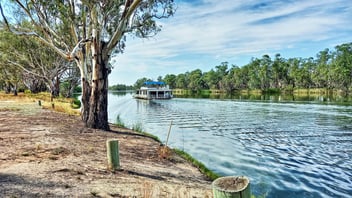Digitising our Reticulation Operations in Two Months
[embed]https://www.youtube.com/watch?v=1QeFGiY_feo[/embed]
“Surely that is a typo in the title – two months?” This what would have gone through my mind if I read this headline a year ago, before we developed a full Works Management Application for Bundaberg Regional Councils’ Water Services.
Before we deployed our Works Management System (Focus), we had many challenges when managing our reticulation operations by paper with multiple sources of requests generating the paper work-packs for the teams. These sources of work included emails, financial asset system, CRM (Customer Request Management) system, text messages and secret squirrel with huge amounts of manual data entry. We couldn’t answer simple operational questions without doing significant investigating through emails, sorting through boxes, and looking up blended information on the legacy office application.
The challenge to find a solution was also significant. We couldn’t afford a multi-million-dollar EAM (Enterprise Asset Management) application and didn’t want a one size fits all approach, as we are one department within Council and journeying to become an advanced asset management water provider.
We partnered with a software development company to build our own Works Management Application from scratch – a risky approach considering the rumors we heard of cost blowouts on IT project however we mitigated that risk through a simple software delivery process called Scrum. Scrum allowed small increments of software to be produced every sprint (three weeks). This ensured we always had something to show for work and every three weeks we could upgrade the application if needed.
As with most works management applications, the phrase rubbish in, rubbish out comes to mind, and this often happens when staff don’t understand why something is required or the form is not relevant to the activity. Not wanting to hear that comment on our project, we started the build of the application by requesting features from the field staff. We called these requests user stories and an example is below:
As a field technician I want to know the history of an asset, so that I can repair the asset faster, knowing what worked previously.
The team leaders lead the way with engagement and collected over 600 user stories from the staff which we proceeded to deliver. The project team consisted of a project manager with two redeployment operations administration staff and two members from our internal IT team. The small project team worked collaboratively with the field staff to clarify user stories, challenge work processes and clean existing paper forms to produce an application that was fresh, exciting, and created from the ideas of the users.
We started in March 2020 and two months later our field teams were using our Works Management Application in the field. The teams were amazing, using tablets in the field for the first time and using a live works management system. There were challenges along the way, but all problems were quickly resolved in a matter of days thanks to the supportive, driven and innovative team here at Bundaberg Regional Council’s Water Services Branch.
The information we have gathered in a year has enabled us to make better asset decisions, provide visibility into our operations, and improve our communication to the community.

